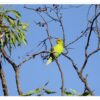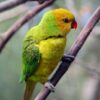Olive-headed Lorikeet
Also known as:
Perfect Lorikeet, Yellow-headed Lorikeet
Also known as:
Perfect Lorikeet, Yellow-headed Lorikeet

Trichoglossus

euteles
Size:
25 cm (9.75 in)
Weight:
80-85 g (2.8-3 oz)
Subspecies including nominate:
one
Colour Adult:
Adults in general green; olive/yellow head, bordered with pale green collar around neck; underwing stripe yellow. Beak orange/red. Eye red.
Colour Juvenile:
Head green/olive, lightly streaked with paler green. Beak brown. Eye brown.
Call:
Calls are described as repetitious. long and wheezy; also rapid, buzzy trilling notes and muted series of harsh, longer squeaks, twitters and whistles.
More Information:
Content Sources:
CITES
BirdLife International
Cornell Lab of Ornithology/Birds of the World
A Guide to Parrots of the World, Juniper and Parr, 1998
Parrots of the World, Forshaw and Cooper, 1977.
Parrots of the World, Forshaw, 2006.
Parrots in Aviculture, Low, 1992.
Lexicon of Parrots, Thomas Arndt.
Bird Care
Captive Status:
Fairly common.
Longevity:
—
Housing:
Aviary size 3 x 1 x 2 m (9.8 x 3.3 x 6.5 ft) with well drained, tiled or concrete floor, or indoor enclosure 1.2 m (4 ft) minimum length in tiled room.
Diet:
Nectar, either a commercial type or homemade from lactose-free baby cereal, honey, malt extract or molasses, mixed with filtered water and made fresh once or twice daily, comprising at least 40 percent of the diet; fruits such as: apple, pear, orange, banana, pomegranate, cactus fruits, mango, kiwi; vegetables such as: carrots, fresh corn on the cob or frozen sweetcorn; green leaves such as: Swiss chard, lettuce, dandelion, sowthistle, chickweed; dried figs soaked in water a few hours; spray millet and a small amount of soaked or sprouted sunflower seed; small amount of canary seed and/or oats.
Enrichment:
Provide swings, ropes and ladders; chewables such as: heat sterilized pine cones, wooden and vegetable tanned leather toys, foraging/puzzle toys. Also require frequent bathing so provide overhead misters and shallow water bowls.
Nest Box Size:
Vertical box 10″ x 10″ x 24″ (25.4 cm x 25.4 cm x 61 cm).
Clutch Size:
3
Fledging Age:
8 weeks
Hatch Weight:
—
Peak Weight:
—
Weaning Weight:
—
World Population:
Unknown, stable.
IUCN Red List Status:
Least Concern
CITES Listing:
Appendix II
Threat Summary:
Not globally threatened. A BirdLife “restricted-range” species. Trade occurs locally.
Range:
Timor and E Lesser Sunda Islands from Lomblen east to Nila and Babar, Indonesia.
Habitat:
Found up to 2400 m (7872 ft) in lowland primary and secondary forest, savanna woodland and cultivated areas.
Wild Diet:
Feeds on pollen, nectar, fruits, seeds and insects and their larvae.
Ecology and Behaviour:
Seen in flocks of up to 100 individuals outside the breeding season. Are noisy and conspicuous in flight; quiet and hard to detect while feeding and resting. Local presence determined by food availability.
Clutch and Egg Size:
3 elliptical eggs, 24.0 x 20.0 mm (0.9 x 0.8 in).
Breeding Season:
Not recorded.
Related Links:
—
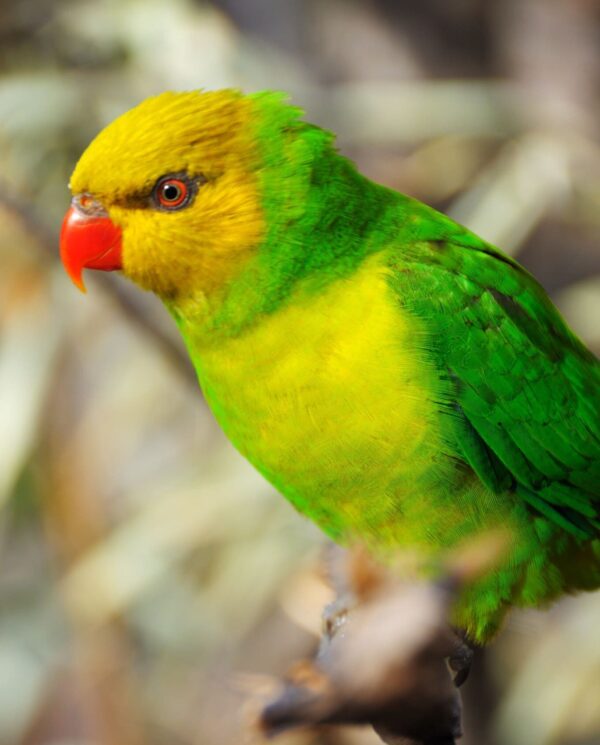
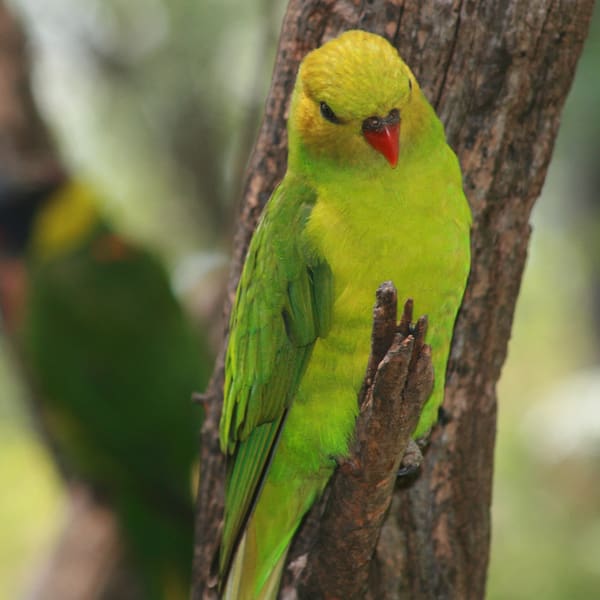
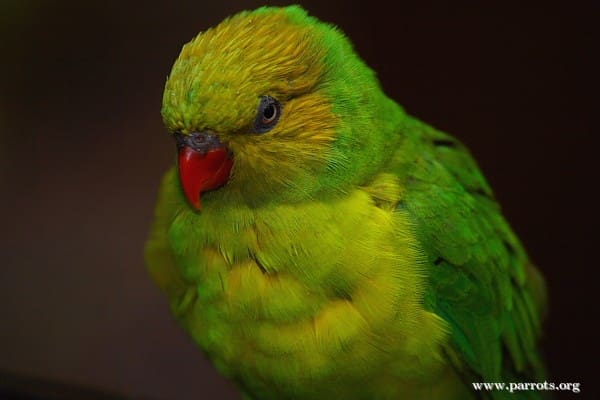
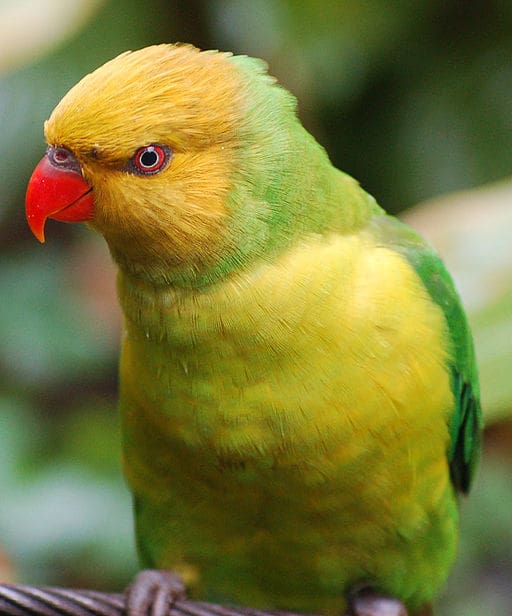
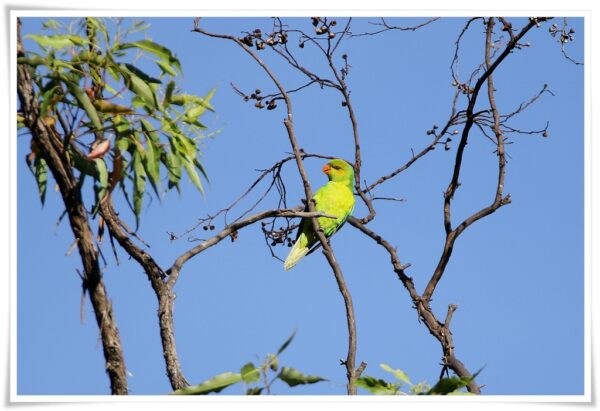
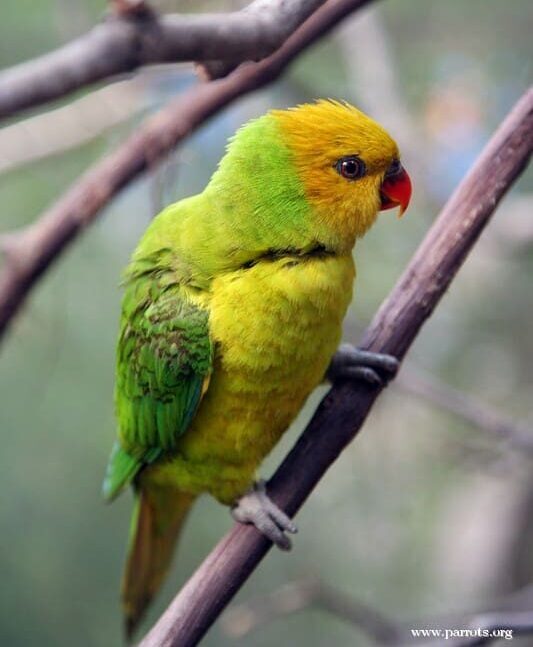
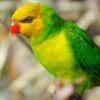
![© AJ Reinhart [CC BY 2.0] via Wikimedia Commons A wild Olive-headed Lorikeet perches in a tree](https://parrots.org/wp-content/uploads/2023/01/wpt_Olive-headed-Lorikeet_1228-5-100x100.jpg)

![© Derek Ramsey [CC BY-SA 2.5] via Wikimedia Commons An Olive-headed Lorikeet perches on wire at Pittsburg Zoo, USA](https://parrots.org/wp-content/uploads/2023/01/wpt_Olive-headed-Lorikeet_1228-3-100x100.jpg)
